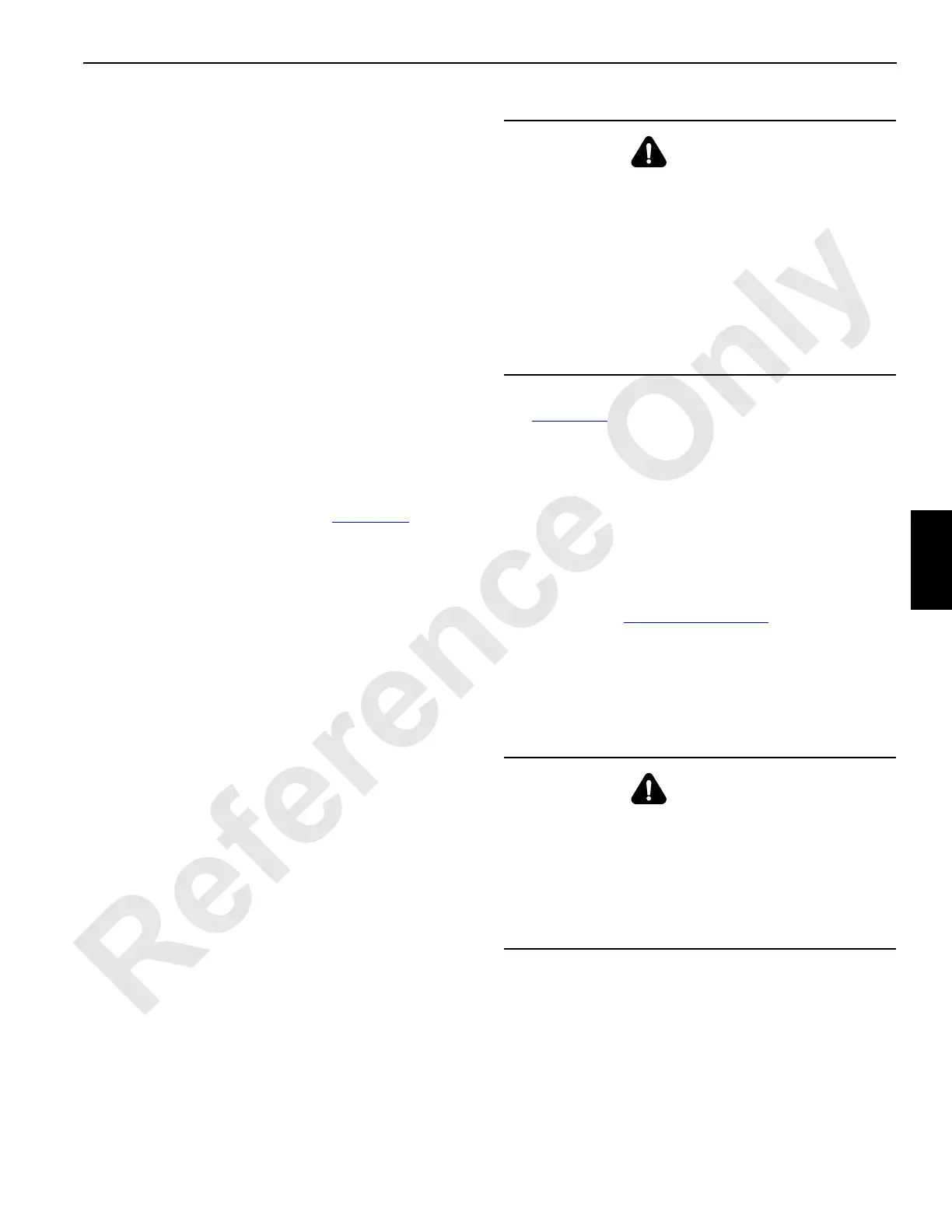Manitowoc Published 05-03-17, Control # 228-03 5-19
16000 SERVICE/MAINTENANCE MANUAL HOISTS
3. Tighten loose tie-bolts, cap screws, and set screws.
Check that all cotter keys are installed and opened.
4. Check the sheaves for uneven wear in the grooves and
on the flanges. Check for loose or wobbly sheaves.
These conditions indicate faulty bearings or bushings.
5. Check the fit of the wire rope in the groove of each
sheave. An oversize wire rope can crack the lip of the
sheave flange causing rapid wear of the wire rope and
sheave. The groove must be larger than the wire rope,
and the groove must be free of rough edges and burrs.
6. Check that the hook, the trunnion, and the swivel rotate
freely without excessive play. Faulty operation indicates
faulty bushings or bearings or inadequate lubrication.
7. Check the swivel of the hook-and-weight ball for the
following conditions:
• Overloading: Spin the swivel by hand. If the motion
is rough or has a ratchet-like effect, the swivel
bearings are damaged.
• Side loading: The swivel will turn freely in one spot
and lock-up in another. This condition can also be
checked by looking gap (4c, Figure 5-16
) between
the barrel and shank (swivel must be removed from
weight ball to check). If the gap is wide on one side
and closed on the other side, damage is present.
NOTE: The gap between the barrel and the shank is
normally 0,508 mm (0.020 in) to 1,27 mm (0.050
in). If the gap increases, swivel-bearing failure is
indicated.
8. Check the load block for signs of overloading including
spread side plates, elongated holes, bent or elongated
tie-bolts, and cracks.
9. Check all welds for defects and cracks.
10. Check the wire rope for wear and broken wires at the
point the wire rope enters the dead-end socket. Check
the socket for cracks. Tighten the wire-rope clips at the
dead end of the wire rope.
11. Check that each hook has a latch and that the hook latch
operates properly. The latch must not be wired open or
removed.
12. Inspect each hook and shackle for damage as shown in
Figure 5-18
.
13. See the ASME B30-10 Standard for specific hook
replacement guidelines. The standards are available as
follows:
•Mail—ASME, 22 Law Drive, Fairfield, New Jersey,
07004-2900
• Toll free phone–US & Canada 800-843-2763,
Mexico 95-800-843-2763, Universal 973-882-1167
•Fax—973-882-1717 or 973-882-515
•E-mail—(infocentral
@asme.org)
14. Contact the supplier of your hooks, shackles, blocks,
and other rigging for repair instructions.
15. Check each hook and shackle at least yearly for cracks
using a dye penetrant test, MAG particle test, ultrasonic
test, or by X-ray.
WARNING
Falling Load Hazard!
To prevent a load from dropping, the hook latch must
retain slings or other rigging in the hook under slack
conditions.
The hook latch is not intended as an anti-fouling device,
and caution must be taken to prevent the hook latch from
supporting any part of the load.
Slings or other rigging must be seated in the hook when
handling the load. They must never be in position to foul
the hook latch.
WARNING
Falling Load Hazard!
To prevent a load from dropping due to hook or shackle
failure, do not attempt to repair cracks in hooks and
shackles by welding. Furthermore, do not weld on any
load bearing component unless proper welding methods
are used. Contact the Manitowoc Crane Care Lattice
Team for material and welding specifications.
